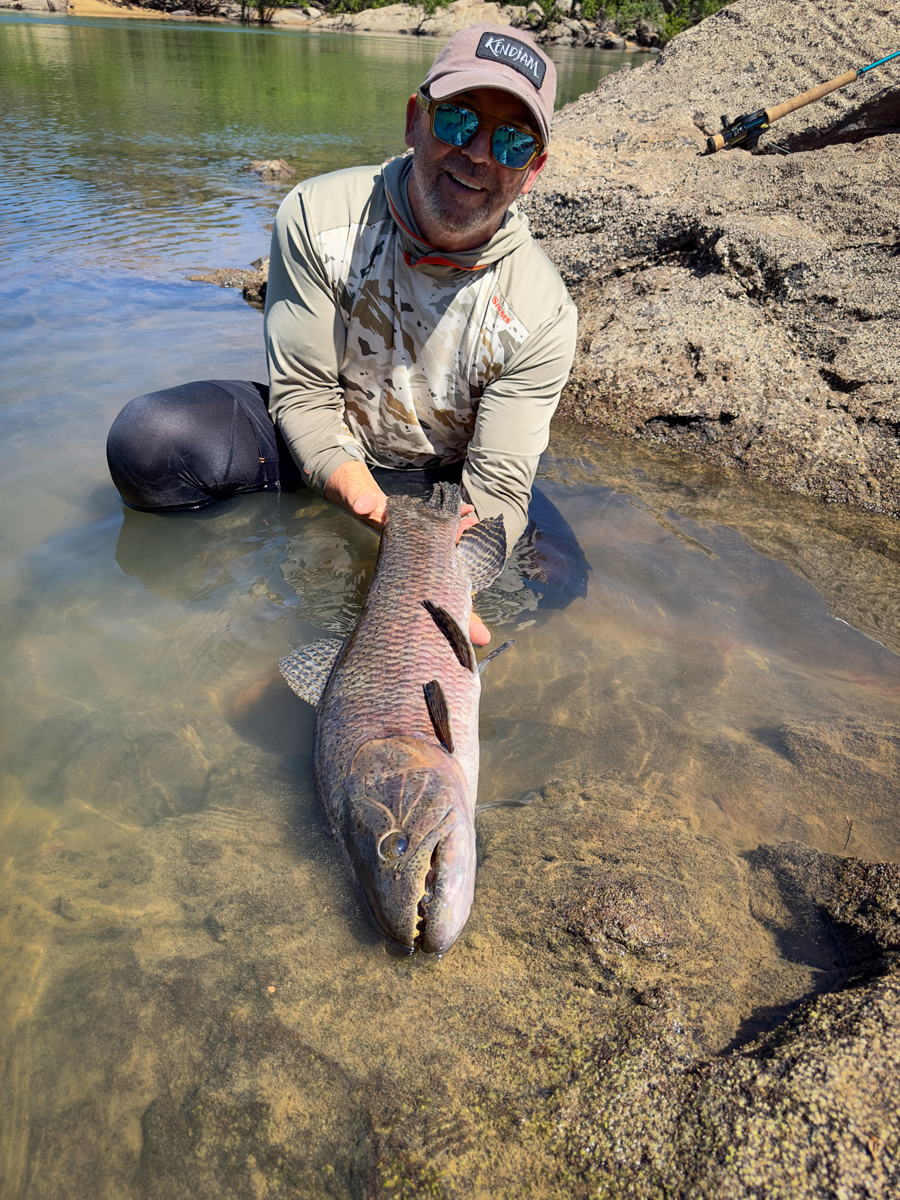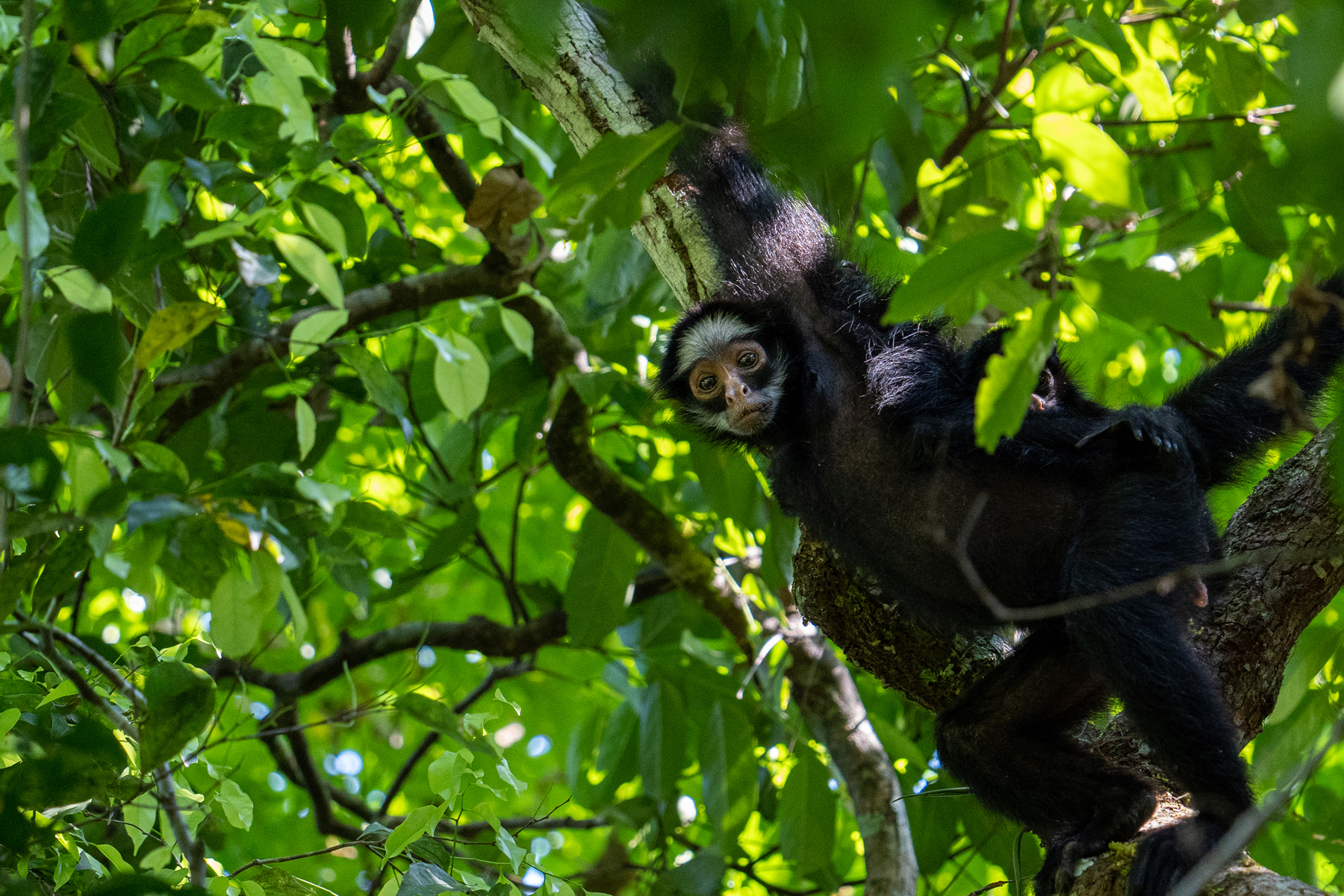
9 minute read
KENDJAM: The Kayapó’s Legacy
Visiting Kendjam feels like stepping back in time 100 years. The experience here is one of the most overwhelming things an angler can encounter. It’s not just about the fishing—it’s the jungle, the wildlife, and the native culture that make this place truly special.
By: HELMUT ZADERER // Photos by: VAIDAS USELIS
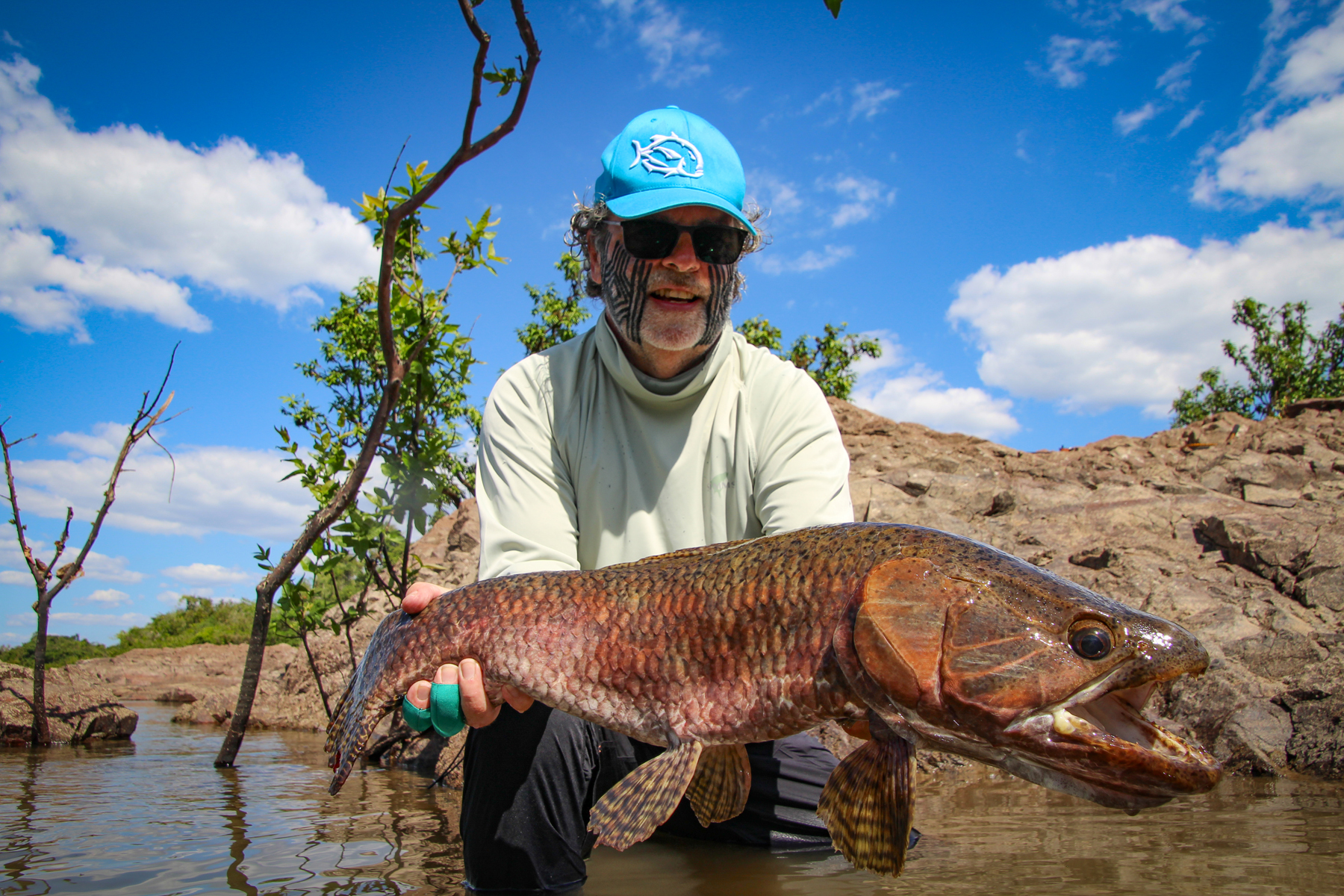
The owners describe Kendjam as a premium jungle lodge—and honestly, I couldn’t find better words to describe this comfortable oasis in the middle of nowhere. It’s the perfect blend of wilderness and what I’d call luxury glamping, an experience that is nothing short of amazing. The food, the service—everything is a solid ten out of ten.
From the moment we arrived at Manaus Airport, we were warmly welcomed by Debora, who took us to Hotel Juma in the center of Manaus. That evening, we enjoyed a first-class dinner together before preparing for the journey ahead. The next morning, Debora accompanied us to the private airport, where we boarded a flight deep into the Amazon.
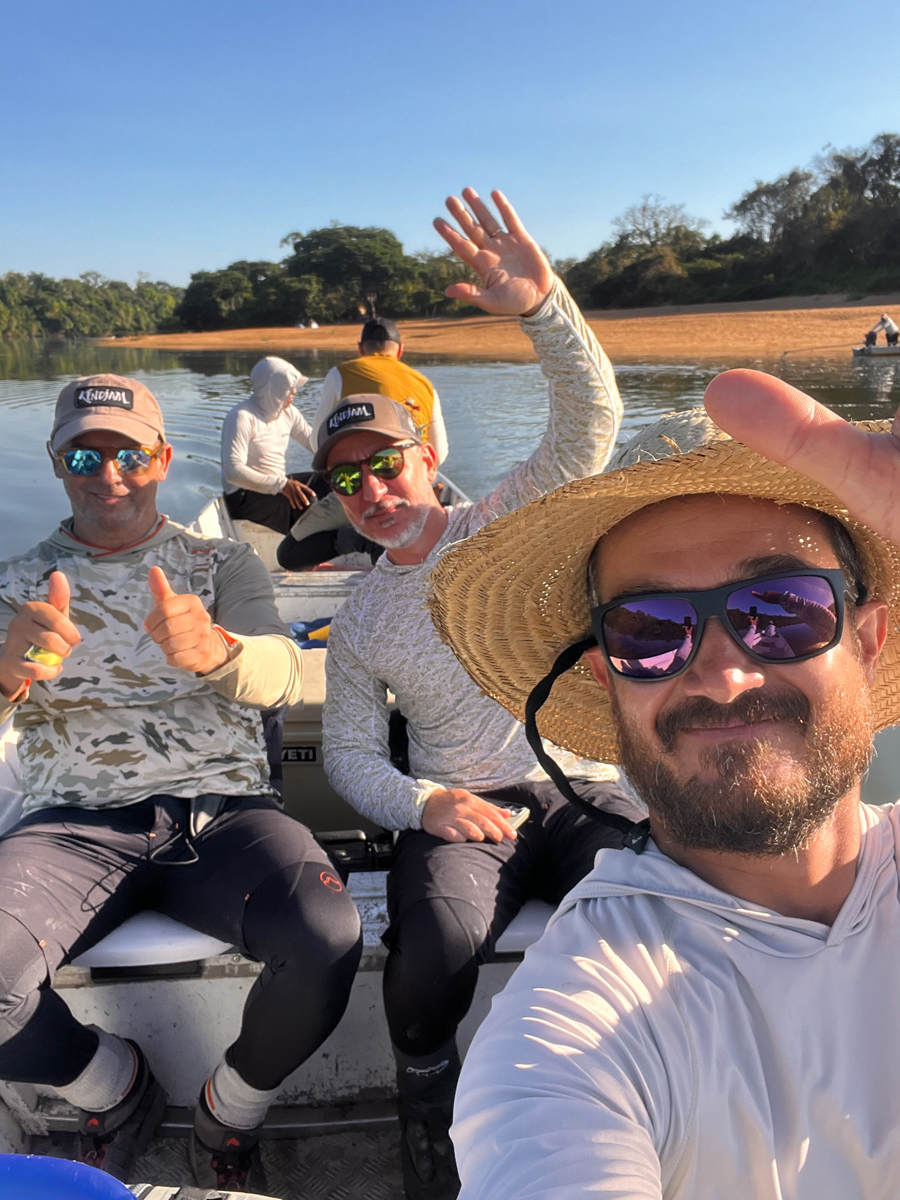
Upon landing on the remote airstrip at Kendjam, we were greeted enthusiastically by our guides and a delegation of Kayapó people. The honor of meeting Beprere, the community’s headman, was a humbling experience. From there, we embarked on a two-hour boat journey down the breathtaking Iriri River before arriving at the lodge. We were welcomed with drinks and snacks, and our guides gave us a tour of the facilities. The lodge was stunning, and from the first moment, we felt at home. The day ended with the usual routine—unpacking, organizing our gear, and preparing for what lay ahead: our first day of fly fishing in this untouched paradise.
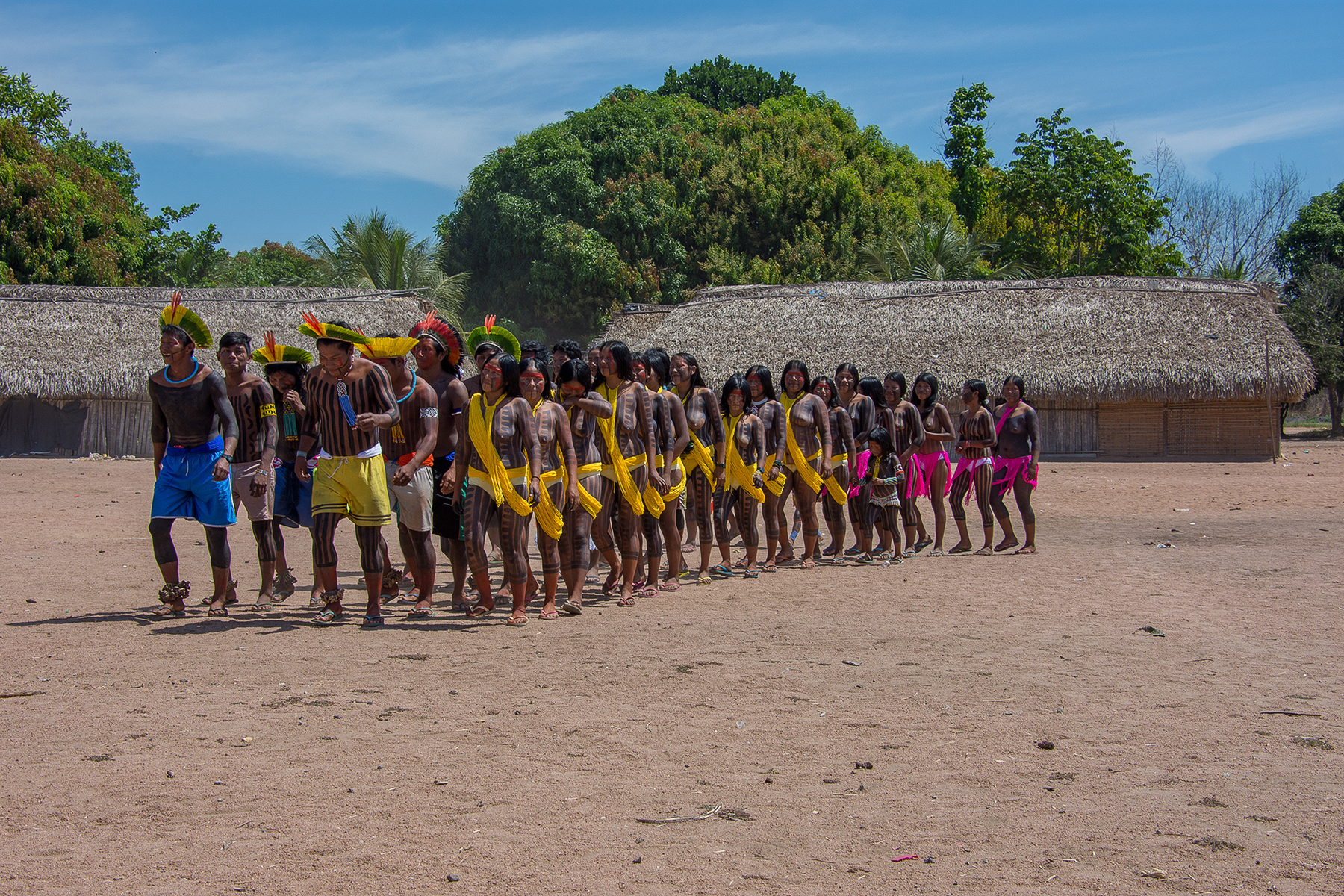
One of the main purposes of this adventure was to produce my new film, KENDJAM. Unfortunately, my friend Vaidas got held up at customs and missed our flight into the jungle. For a moment, we joked that he might have to rent a canoe and paddle his way to us. Luckily, he was picked up separately and arrived a day later. Good thing, too - because our iPhone videos wouldn’t have come close to capturing the stunning quality of Vaidas’ professional photography and filmmaking. We were relieved when he finally made it!

The Fishing
The fishing season at Kendjam begins in mid-to-late June as the Iriri River recedes, with water levels continuing to drop through the late season in mid-September.
We chose the golden middle, arriving on July 16th. By this time, the river was shallow enough for easy wading, making it the perfect setting for sight fishing for peacock bass, matrinxã, pacu, and many other species. We were able to wet wade in most areas, gaining access to jungle creeks, shallow flats, and prime fishing runs.
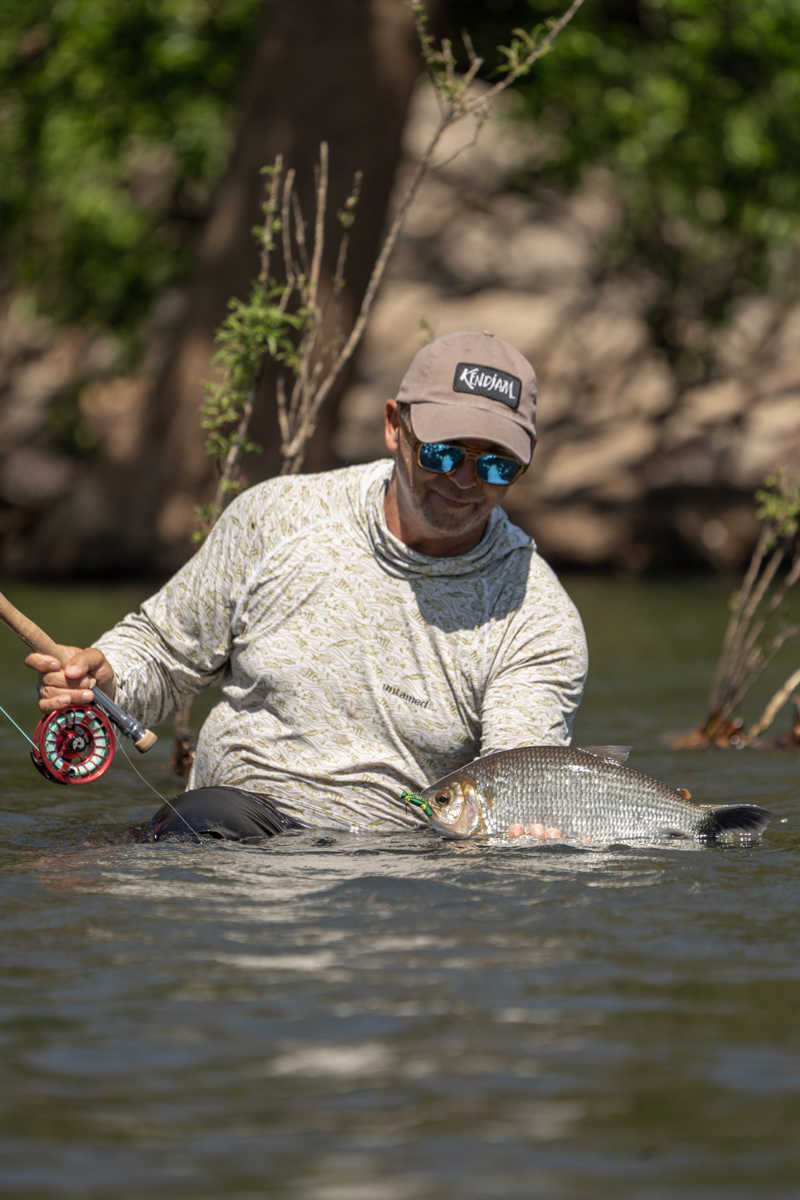
We knew before arriving that Kendjam wasn’t a destination for giant trophy fish, but the Iriri River is a dream for any angler who loves crystal-clear waters, light fly-fishing tackle, and technically demanding fishing. The variety of species is incredible, and our main focus was sight fishing with dry flies—the ultimate thrill in this region.
Every day, we caught seven to eight different species. The Iriri River holds at least three known species of pacu, a fish that leaps out of the water to feed on insects. We targeted them with dry flies, wet flies, and nymphs, fishing upstream while wading with 5-weight rods.
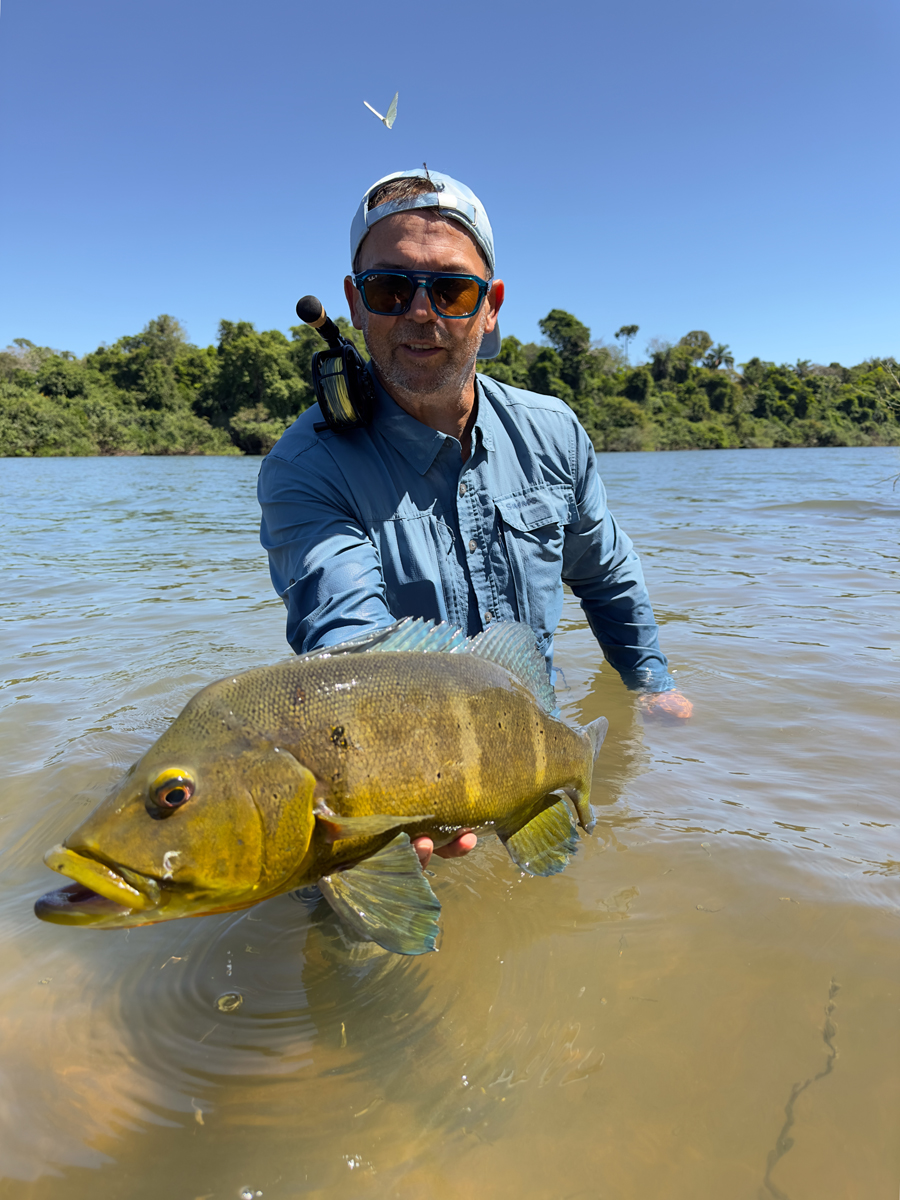
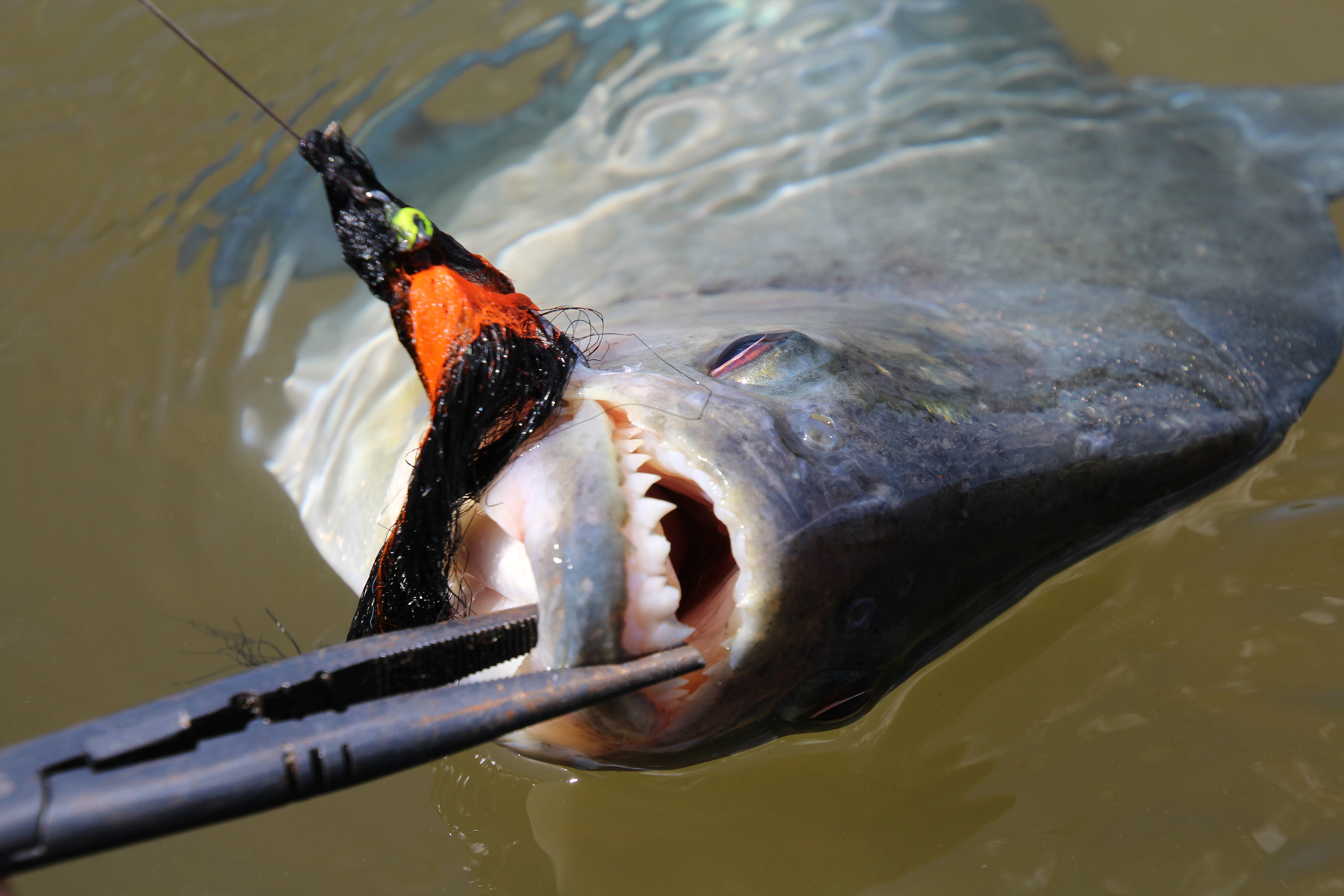
For peacock bass, we used streamers. The Iriri River is home to an endemic species of peacock bass found nowhere else in the world. Unlike other peacocks, these prefer moving water over stagnant pools. Sight fishing for them was an absolute rush, watching their aggressive strikes unfold before our eyes.
Another standout species was the wolf fish, which truly lives up to its name—attacking poppers and big flies with the ferocity of a pack of wolves chasing prey. These prehistoric-looking predators, armed with rows of sharp teeth, can reach up to 20 lbs in Kendjam. Seeing them ambush topwater flies was exhilarating. The matrinxã, pound-for-pound the strongest fighter in the jungle, was another highlight. These powerful fish eat fruit, flowers, insects, and other fish, making them a prime target for dry fly enthusiasts.
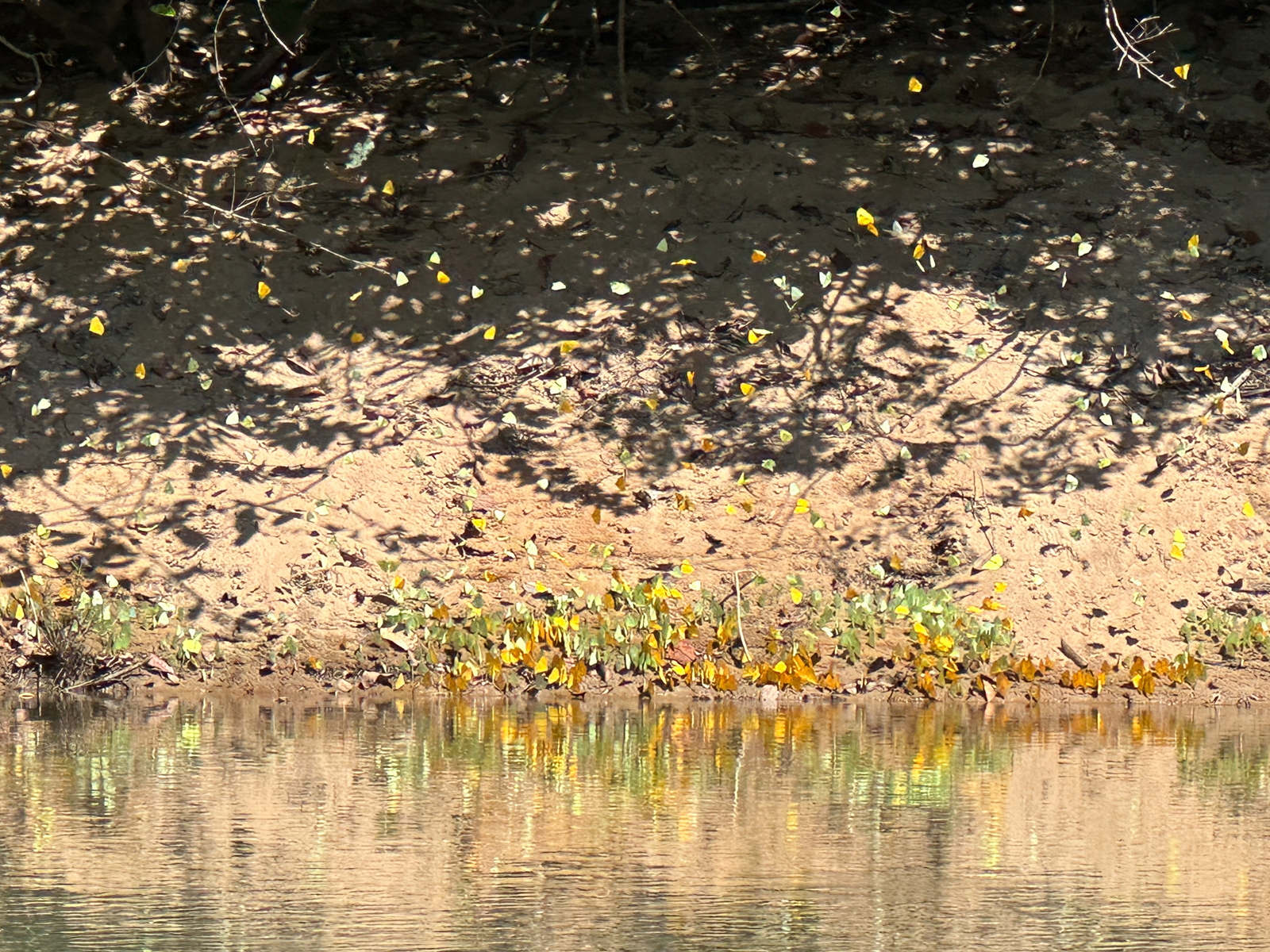
“This indigenous land is the Kayapó’s land—the land of warriors who have protected it for centuries. Here, in the heart of the reserve, they remain completely untouched. Fly fishing plays a role in preserving this area. The mission of the Kayapó and the anglers is the same—to keep the land intact. That is the legacy of this project.” - Rodrigo Salles, Untamed Angling
Then there’s the bicuda—built like a barracuda, complete with a torpedo-shaped body and turbocharged tail. These fish are the true sprinters of the Iriri River and one of its most aggressive topwater predators.
Beyond the fishing itself, our guides made the experience even more special. Every guide team consisted of a professional guide and a native Kayapó guide—a perfect combination. The pro guide provided technical expertise, while the native guide’s deep knowledge of the jungle and river ensured an unforgettable adventure.
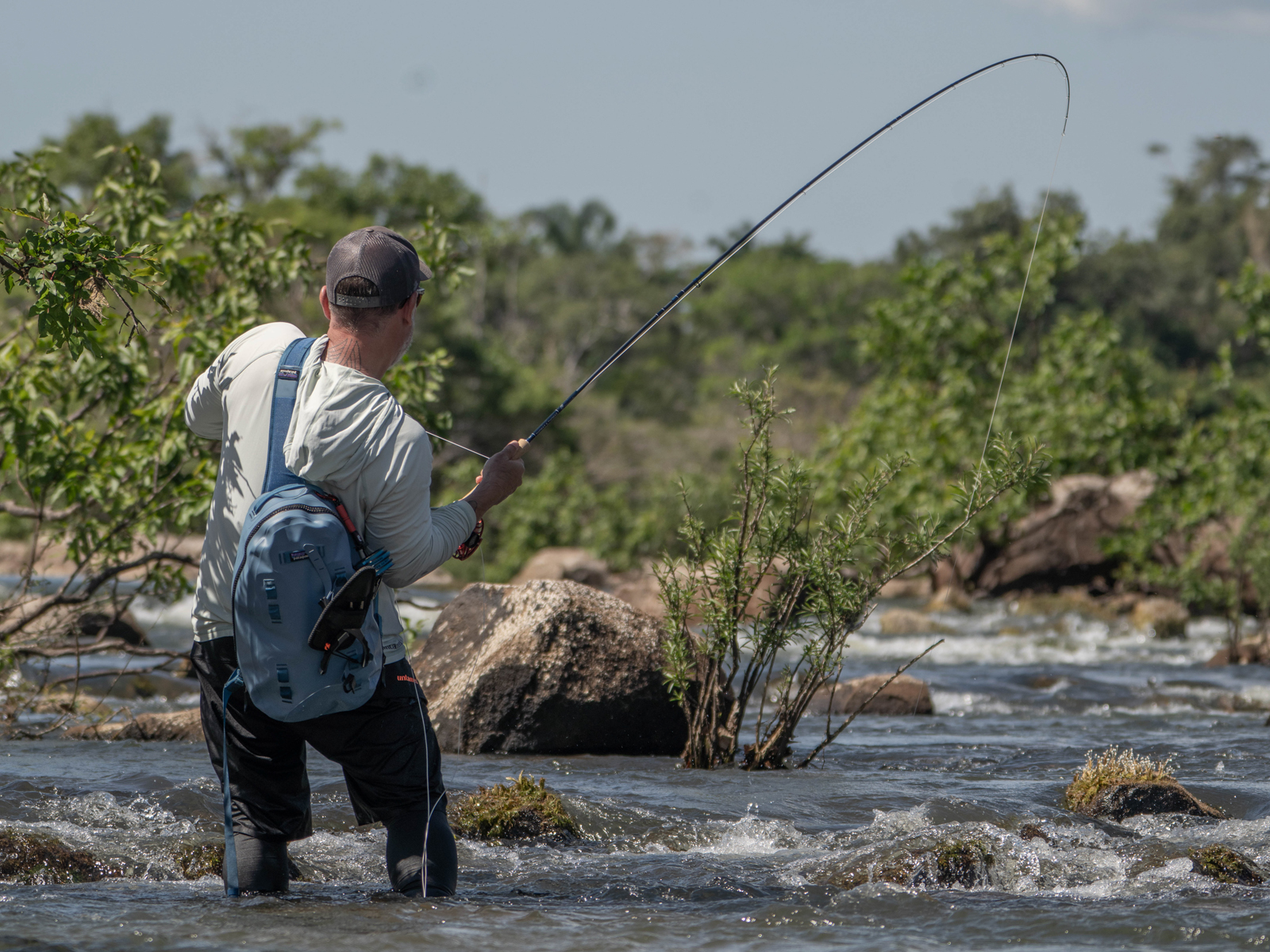
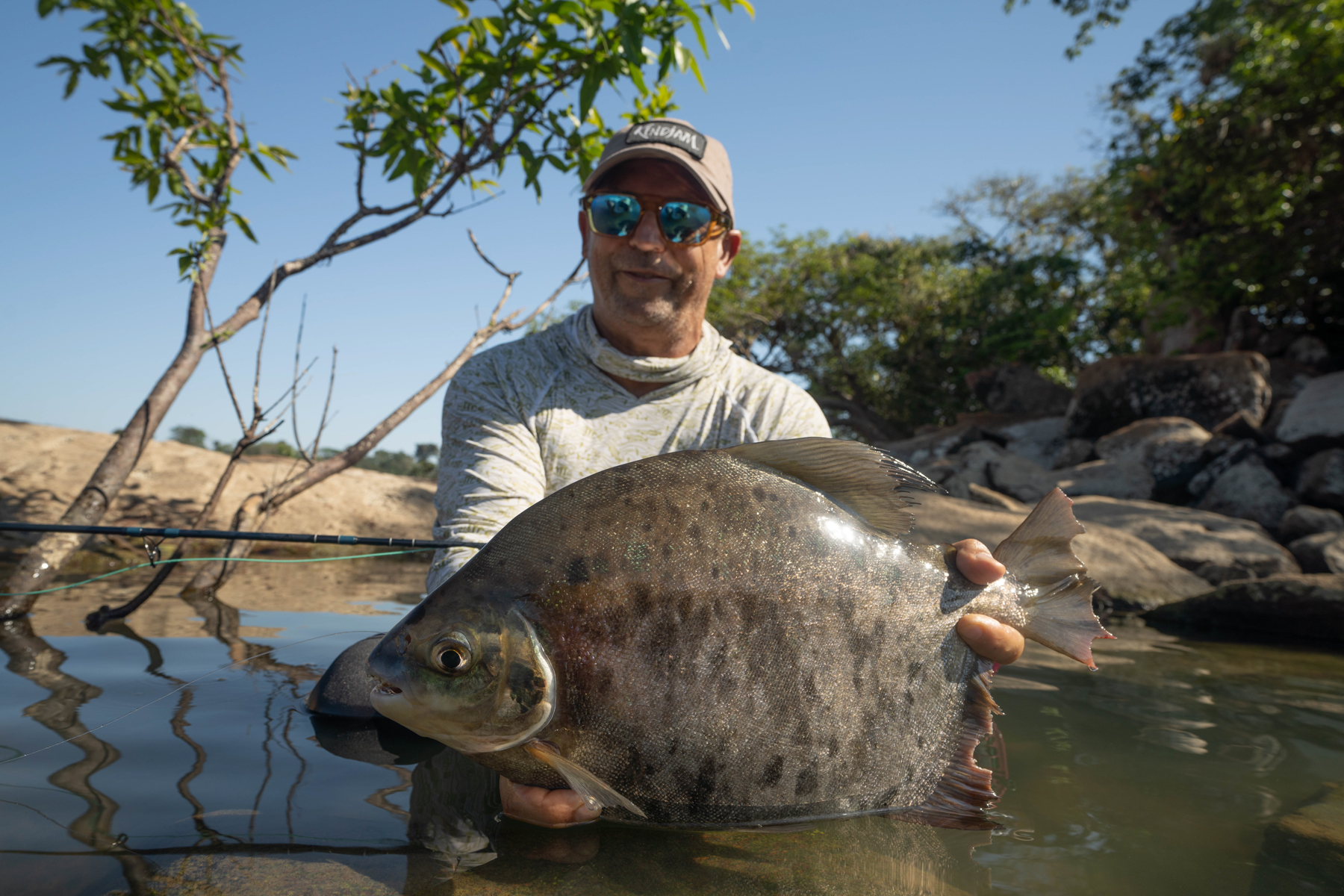
The Jungle
“At Kendjam, you’ll be fishing places that have been untouched for a very long time. I’ve been guiding here for about eight years, and I still find new places I’ve never fished before,” said our guide, Rafael Costa. And I truly believe him—the area is vast.
Kendjam is located in one of the most remote regions of the Brazilian Amazon—the Mekragnoti Indigenous Territory—550 miles southeast of Manaus. The Iriri River originates on the border of Mato Grosso and Pará, flowing northeast through the Amazon for over 800 miles before meeting the Xingu River. It is one of the most protected rivers in southern Brazil’s indigenous lands and ecological reserves.
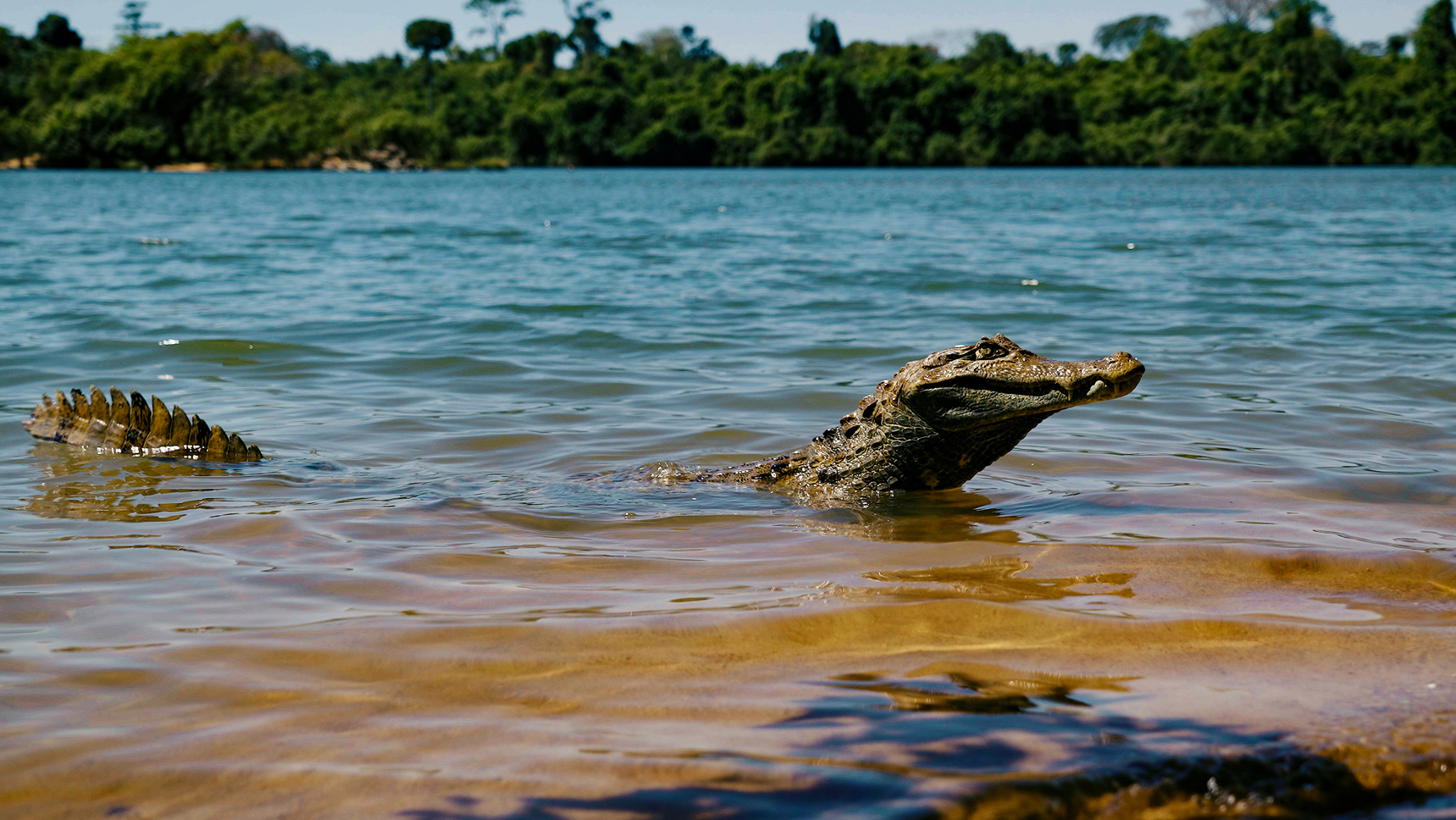
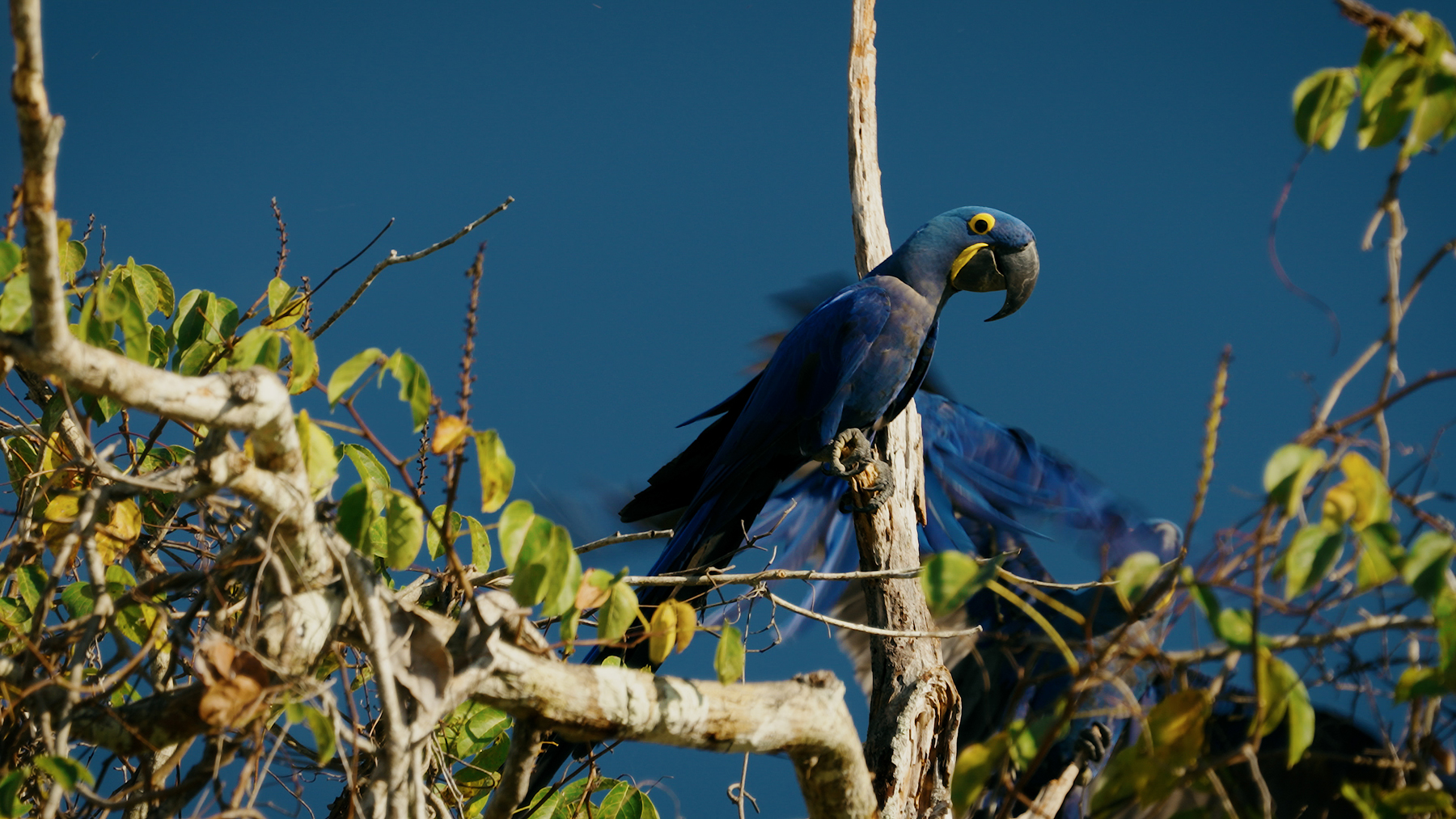
The landscape around the river is breathtaking, but it’s the flora and fauna that make it extraordinary. Towering trees, unique plant species, and an abundance of wildlife surround you at every turn. During our journey, we encountered jaguars, caimans, countless bird species, and even an anaconda. It was simply amazing.
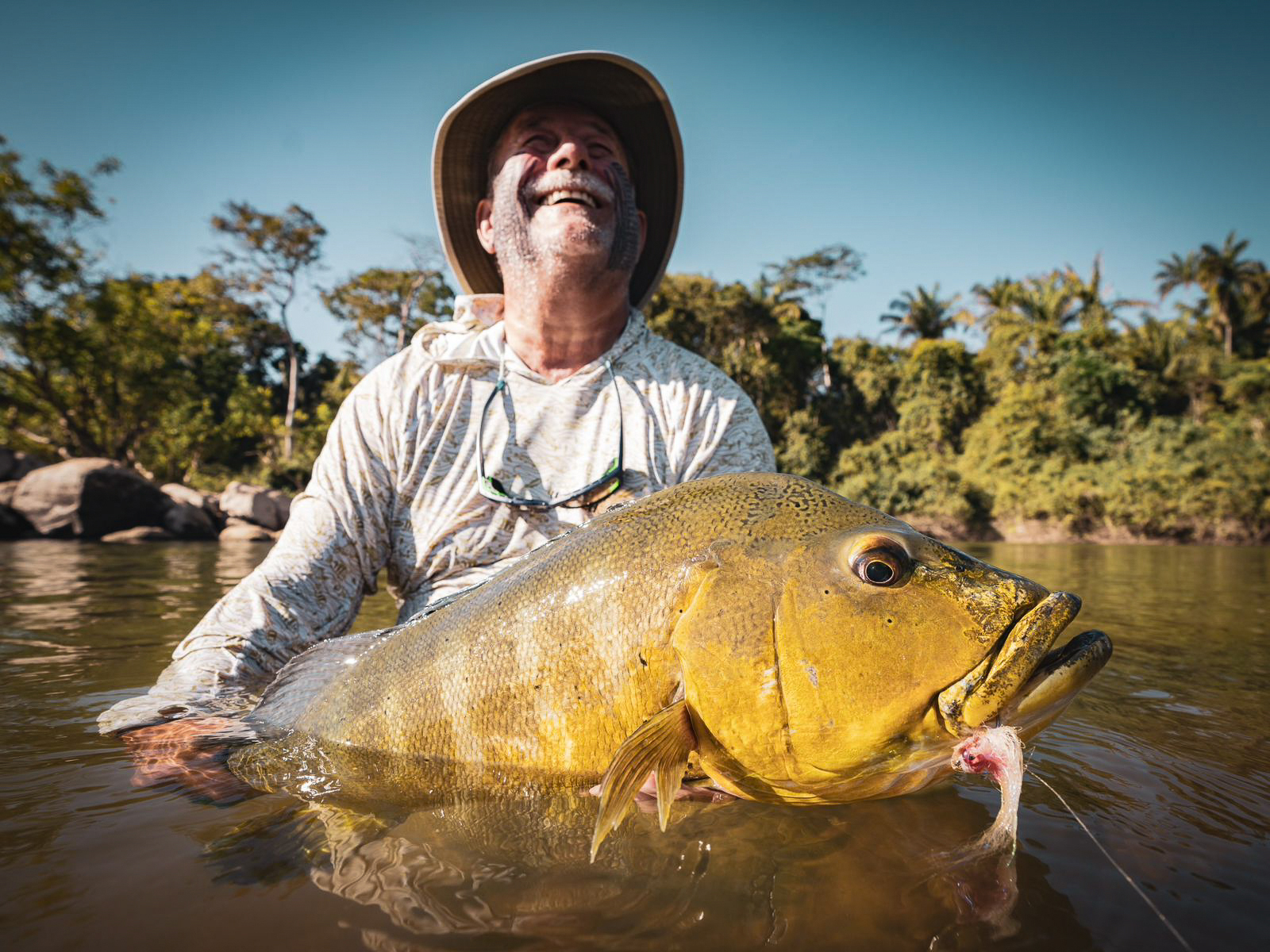
The landscape around the river is breathtaking, but it’s the flora and fauna that make it extraordinary. Towering trees, unique plant species, and an abundance of wildlife surround you at every turn. During our journey, we encountered jaguars, caimans, countless bird species, and even an anaconda. It was simply amazing.

The Native Culture – Sustainable Tourism
The Untamed Angling concept is built on a partnership with Pykoré and Funai, the two indigenous associations representing the Kayapó people. Untamed Angling has established an honest and mutually beneficial relationship with the indigenous communities of the Amazon, ensuring that a portion of each angler’s fee goes directly to the local people. This project provides jobs, supports the Kayapó communities along the Iriri River, and helps them develop sustainable economic alternatives while protecting their land, culture, and way of life.
From the very first day, we felt welcomed with open arms. We were honored to take part in a traditional painting ceremony, where Kayapó women adorned us with tribal markings. We learned that these paintings are an integral part of their culture - performed before hunting, fishing, celebrations, and even conflicts. On our last night, we gathered around a massive bonfire as the Kayapó performed traditional dances. We could feel their genuine interest in sharing their culture with us, just as we were eager to learn about their way of life in the jungle. We left with full hearts, deeply grateful for this rare and special experience.
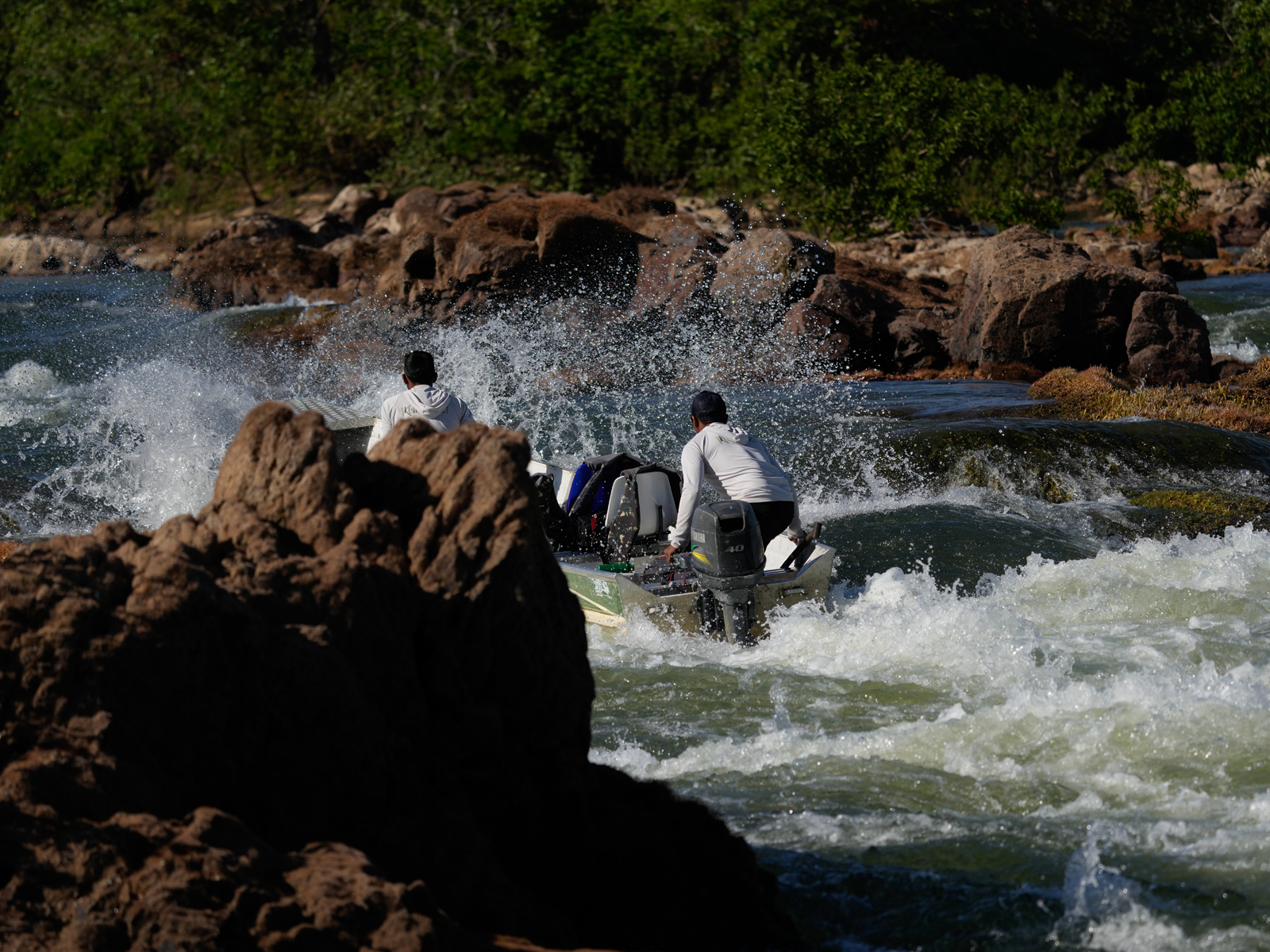
The Kayapó People – Guardians of the Amazon
Deep in the heart of the Brazilian Amazon, the Kayapó people, also known as the Mebêngôkre, have lived in harmony with the rainforest for centuries. Their vast territory, spanning approximately 11 million hectares, is one of the largest and most well-protected indigenous lands in Brazil. The Kayapó are not only known for their deep cultural traditions but also for their fierce commitment to protecting their environment against deforestation, illegal mining, and other external threats.
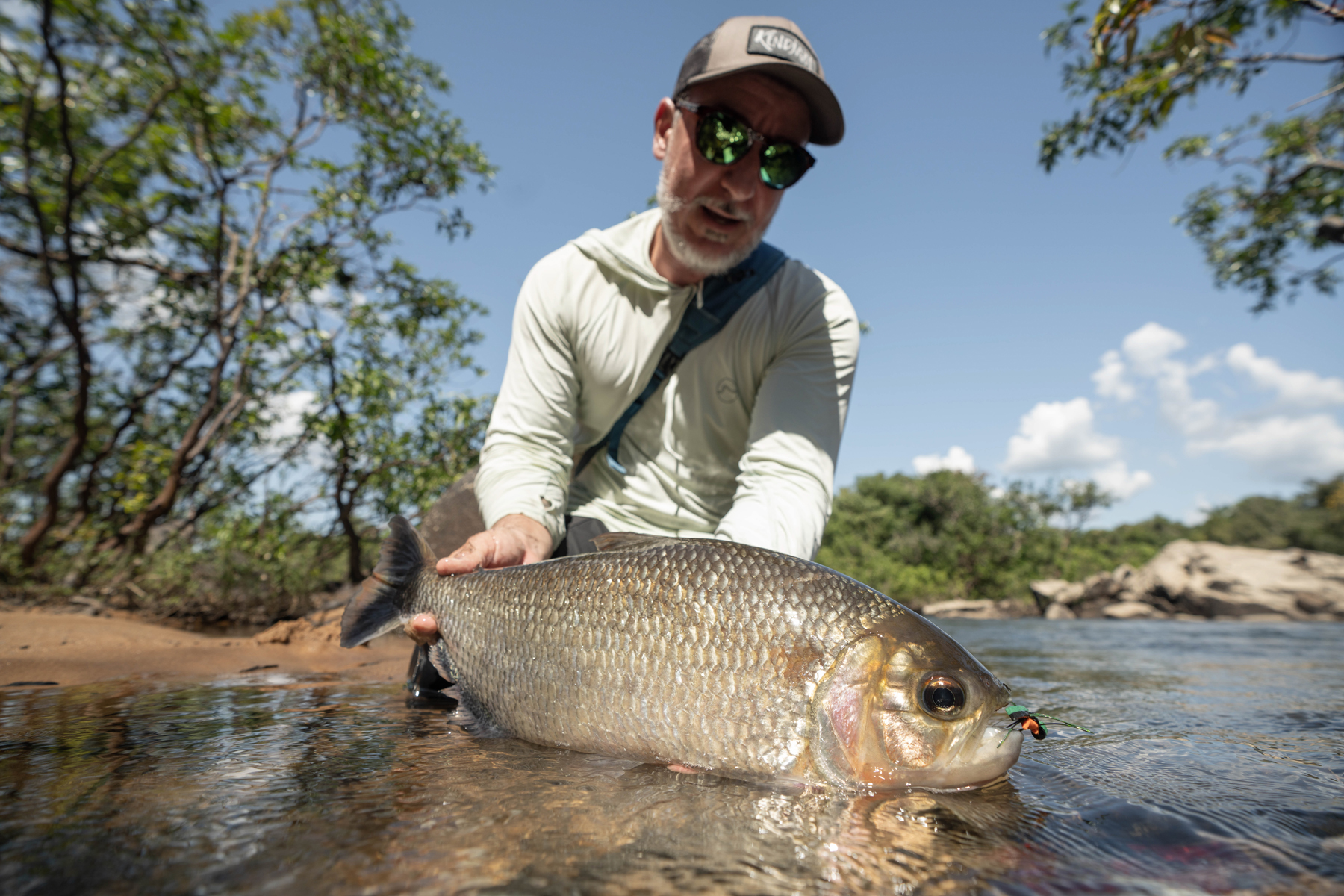

The Kayapó are a proud and independent people, organized into clans that emphasize communal living and strong leadership. Their villages are arranged in a circular layout, with a large central Men’s House serving as the hub for important gatherings and decision-making. Oral storytelling, song, and dance play a vital role in passing down knowledge, ensuring that younger generations remain connected to their ancestral heritage.
A striking aspect of Kayapó culture is their use of body painting and feathered ornaments, which hold deep symbolic meaning. Black and red body paint, often made from natural dyes, is used for ceremonies, hunting, and rites of passage, while intricate feathered headdresses signify social status and achievements.

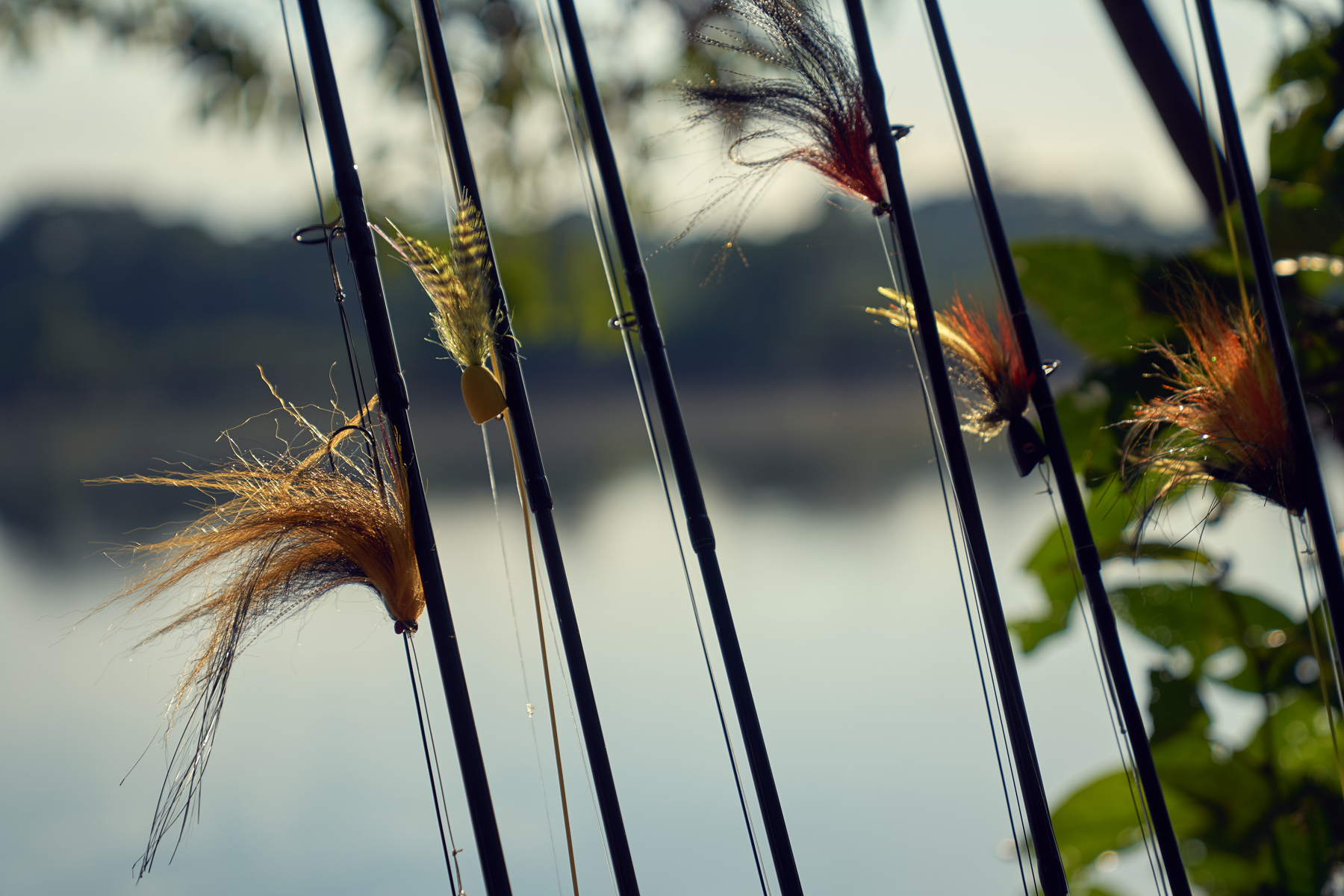
Many Kayapó men also wear traditional lip disks and ear piercings, marking their journey into adulthood and their connection to their ancestors.
For the Kayapó, the Amazon is far more than a home—it is their library, their pharmacy, and their supermarket. Their deep ecological knowledge allows them to sustainably harvest the forest’s resources, utilizing medicinal plants, edible fruits, and hunting techniques that have been passed down for generations.
Hunting and fishing remain essential activities, with Kayapó men using bows, arrows, and poison-tipped darts to hunt game such as monkeys and birds. They also employ traditional fishing techniques, sometimes using crushed plantbased toxins to stun fish in the river. Women play a crucial role in gathering nuts, honey, and fruit, as well as cultivating staple crops such as manioc, corn, and bananas.
